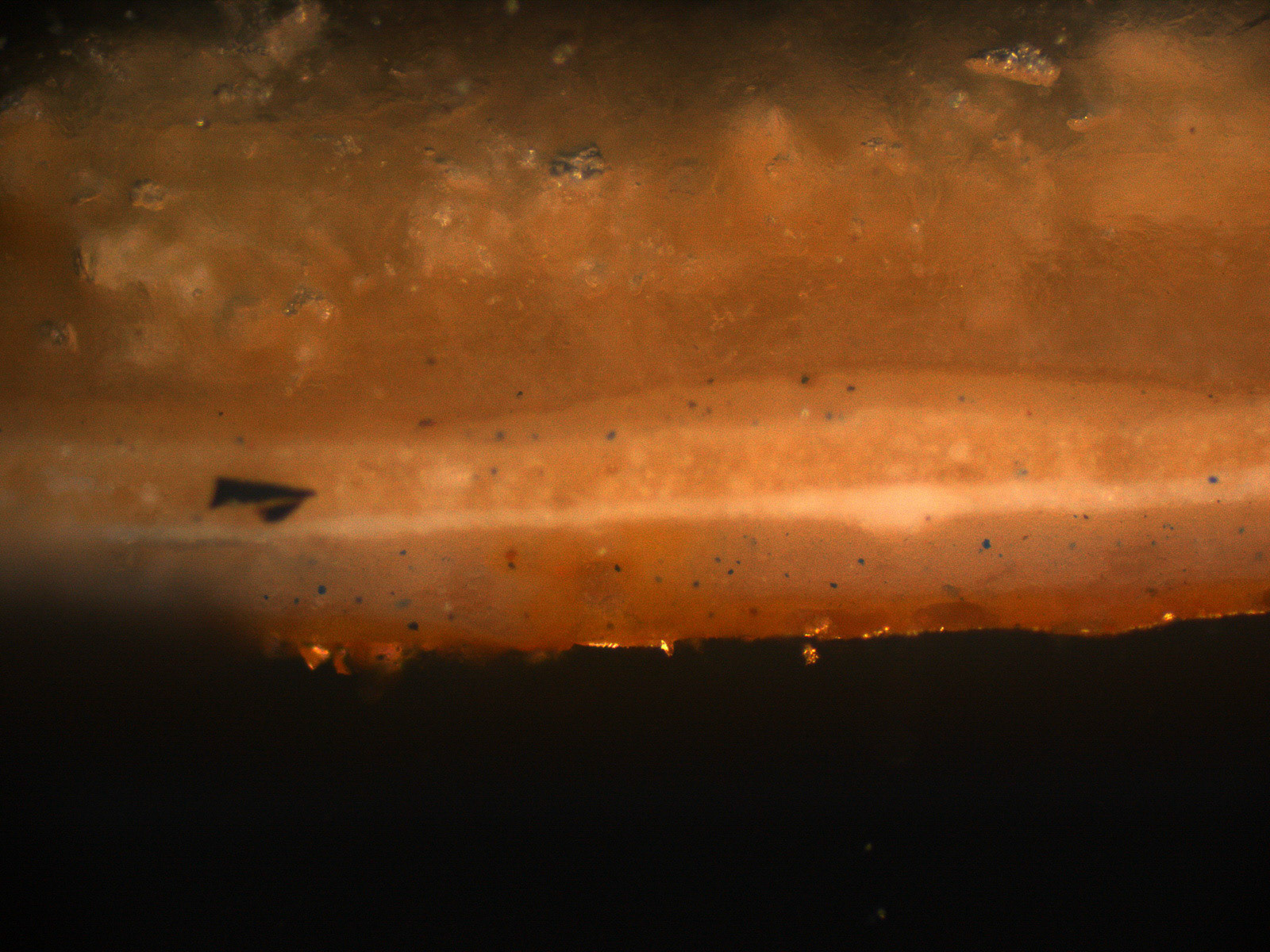Ceiling rose in the Grand Room of the Tower House with gilded ornament from ca. 1900.
Color of Time project began at the Tower House, which was built near the end of the 19th century. Its first owner was Imre Kiralfy, a Hungarian composer, showman, and impresario who came from the United States to London to produce the Venice exhibition at Earls Court.
He stayed back in London and served as the General Director of several colonial exhibitions, in-cluding the Greater Britain Exhibition in 1899. He went on to initiate further projects like the erection and management of White City and London's Olympics (1908). In the archives of the Museum of London, are daguerreotypes dating back to the days when Kiralfy lived at the Tower House. Images show a wealthy furnished Grand Room with curios from all over the world, flowery wallpapers and ornate decorations. Based on the old photographs Kaabi- Linke started to excavate the ceiling in the Grand Room of the villa.
Underneath at least four layers of plaster, distemper and emulsion paint she found the original surface delicately decorated with gold leaf. The artist carefully chipped away the paint with a scalpel in order to reveal the original ornamentation with its gilding. The fallen paint was collected and then crushed in order to produce a unique pigment that was used for a time and site-specific monochrome reflection of the visible, yet almost forgotten, past of the building.
The work is an ongoing a series of monochrome pigment paintings on canvas. The paintings, that seem to have an almost solid color, are made by grinding layers of cracked and chipped off paint that owners and tenants have applied on the inside walls of the buildings during the decades of its history. The resulting color is produced in situ and non-reproducible, since it consists of a unique sample from successive layers of paint that the building has accumulated through decades of its history, and is essentially its colors of time.

Tower House in Kensington near Earl's Court. Mosaic Rooms exhibtion space.

Grand Room of the Tower House in 1908

Picken specimens from the ceiling rose.

Spectral analysis of specimen

Uncovering the gold leaf of the ceiling rose

Ceiling rose with original gilded border
Tower House, London. Piloting episode of the Colors of Time series.